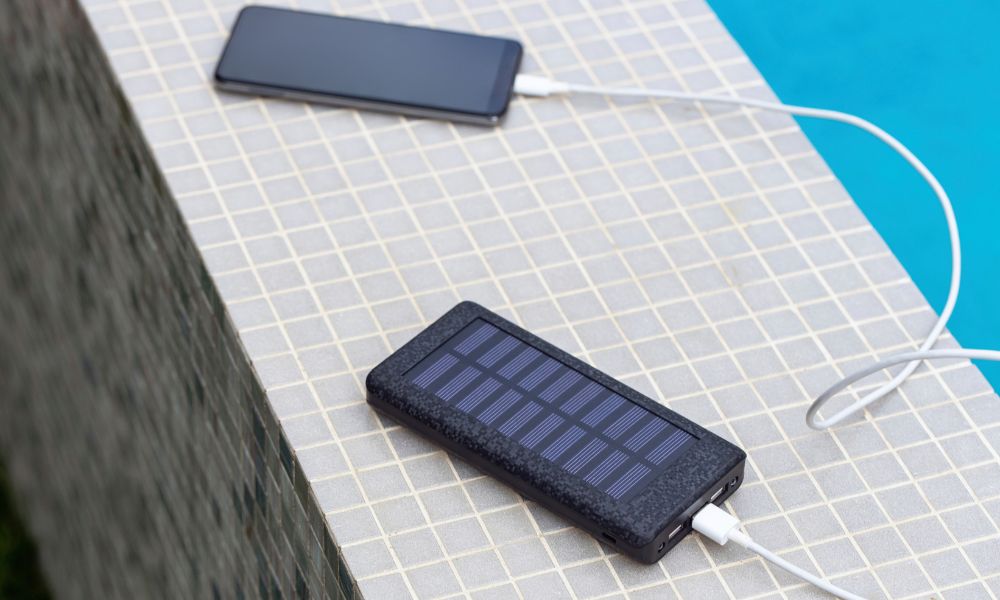
A Comprehensive Guide to Solar Chargers: Harnessing the Power of the Sun
A Comprehensive Guide to Solar Chargers: Harnessing the Power of the Sun
As the world shifts toward renewable energy, solar chargers have become an essential tool for outdoor enthusiasts, travelers, and those looking for sustainable solutions to power their devices. These innovative devices use sunlight to generate electricity, offering a portable and eco-friendly way to stay connected.
In this guide, we’ll delve into everything you need to know about solar chargers, from their benefits and applications to how to choose the right one for your needs.
What Are Solar Chargers?
Solar chargers are portable devices that convert sunlight into electrical energy using photovoltaic (PV) cells. This energy is stored in an internal battery or directly transmitted to connected devices. Designed for portability and convenience, solar chargers are ideal for charging smartphones, tablets, cameras, and even small appliances when you’re on the go.
Benefits of Using Solar Chargers
Switching to solar chargers comes with numerous advantages:
1. Eco-Friendly Energy Source
By relying on sunlight, solar chargers reduce the need for traditional electricity generated from fossil fuels. This makes them a sustainable choice for reducing your carbon footprint.
2. Cost-Effective in the Long Run
After the initial investment, solar chargers use free sunlight to generate power, saving you money on electricity bills over time.
3. Portability and Convenience
Compact and lightweight, solar chargers are designed to be carried anywhere, making them perfect for outdoor adventures or emergencies.
4. Reliable Backup Power
During power outages or in remote locations, solar chargers ensure you stay connected by providing a consistent power source.
Types of Solar Chargers
There are various types of solar chargers available, each catering to specific needs:
1. Solar Panel Chargers
These are basic models with a foldable or rigid solar panel that charges devices directly under sunlight.
2. Battery-Powered Solar Chargers
These models come with built-in batteries, storing energy during the day for use when sunlight is unavailable.
3. Solar Backpacks
Integrated with solar panels, these backpacks allow you to charge devices while on the move.
4. Portable Solar Generators
Larger and more powerful, these chargers can power multiple devices or even small appliances, making them suitable for camping or off-grid living.
Key Features to Look for in a Solar Charger
When choosing a solar charger, consider the following features:
1. Power Output
Ensure the charger provides enough wattage to support your devices. For smartphones, a 5-10W charger may suffice, but larger devices might require 20W or more.
2. Portability
For outdoor activities, opt for lightweight and compact designs that won’t add unnecessary bulk.
3. Charging Speed
Look for chargers with fast-charging capabilities or multiple USB ports to charge several devices simultaneously.
4. Durability
If you’re using the charger outdoors, choose models that are water-resistant, dustproof, and rugged enough to withstand harsh conditions.
5. Compatibility
Check if the charger is compatible with your devices. Some models come with universal connectors, while others may require adapters.
Top Applications of Solar Chargers
Solar chargers are versatile and cater to various scenarios:
1. Outdoor Adventures
Campers, hikers, and backpackers can rely on solar chargers to keep GPS devices, cameras, and phones powered in remote areas.
2. Emergency Preparedness
In natural disasters or power outages, solar chargers provide a reliable backup power source.
3. Travel
Travelers can use solar chargers to power their gadgets on long journeys or in areas with limited access to electricity.
4. Off-Grid Living
For those living off the grid, solar chargers serve as a sustainable way to power essential devices.
How to Use a Solar Charger Effectively
To get the most out of your solar charger, follow these tips:
1. Position the Panel Correctly
Place the solar panel under direct sunlight for optimal energy absorption. Avoid shaded or cloudy areas as they can reduce efficiency.
2. Use During Peak Sunlight Hours
Solar chargers perform best between 10 a.m. and 3 p.m. when sunlight is at its strongest.
3. Keep the Panels Clean
Dust and dirt can block sunlight and reduce efficiency. Regularly clean the panels with a soft cloth.
4. Store Energy for Later Use
For prolonged use, opt for chargers with built-in batteries to store energy for nighttime or cloudy conditions.
Top Solar Chargers on the Market
1. Anker PowerPort Solar Lite
Lightweight and efficient, this model offers fast charging and is perfect for outdoor use.
2. Goal Zero Nomad 10
Compact yet powerful, this solar panel charger is designed for smartphones and small devices.
3. RAVPower Solar Charger
With multiple USB ports and foldable design, it’s ideal for travelers.
4. BigBlue 3 USB Ports 28W Solar Charger
Known for its high energy conversion rate, this charger can simultaneously power multiple devices.
Tips for Maintaining Your Solar Charger
1. Avoid Overcharging
Disconnect devices once fully charged to prevent overheating and extend the charger’s lifespan.
2. Protect From Extreme Weather
While many solar chargers are weather-resistant, prolonged exposure to rain or extreme heat can damage the device.
3. Store Properly
When not in use, store the charger in a cool, dry place to maintain its performance.
The Future of Solar Chargers
With advancements in solar technology, the future of solar chargers looks promising. Innovations like ultra-thin panels, higher efficiency rates, and integration with smart technology are set to revolutionize how we use these devices. As the demand for renewable energy grows, solar chargers will play a pivotal role in reducing dependence on traditional power sources.
Conclusion
Solar chargers are more than just a convenient gadget; they’re a step toward sustainable living. Whether you’re an outdoor enthusiast, a traveler, or someone looking for eco-friendly solutions, investing in a solar charger is a smart move.
By choosing the right model and using it effectively, you can enjoy uninterrupted power while contributing to a greener planet. So, embrace the power of the sun and let solar chargers keep your devices powered, no matter where life takes you.



